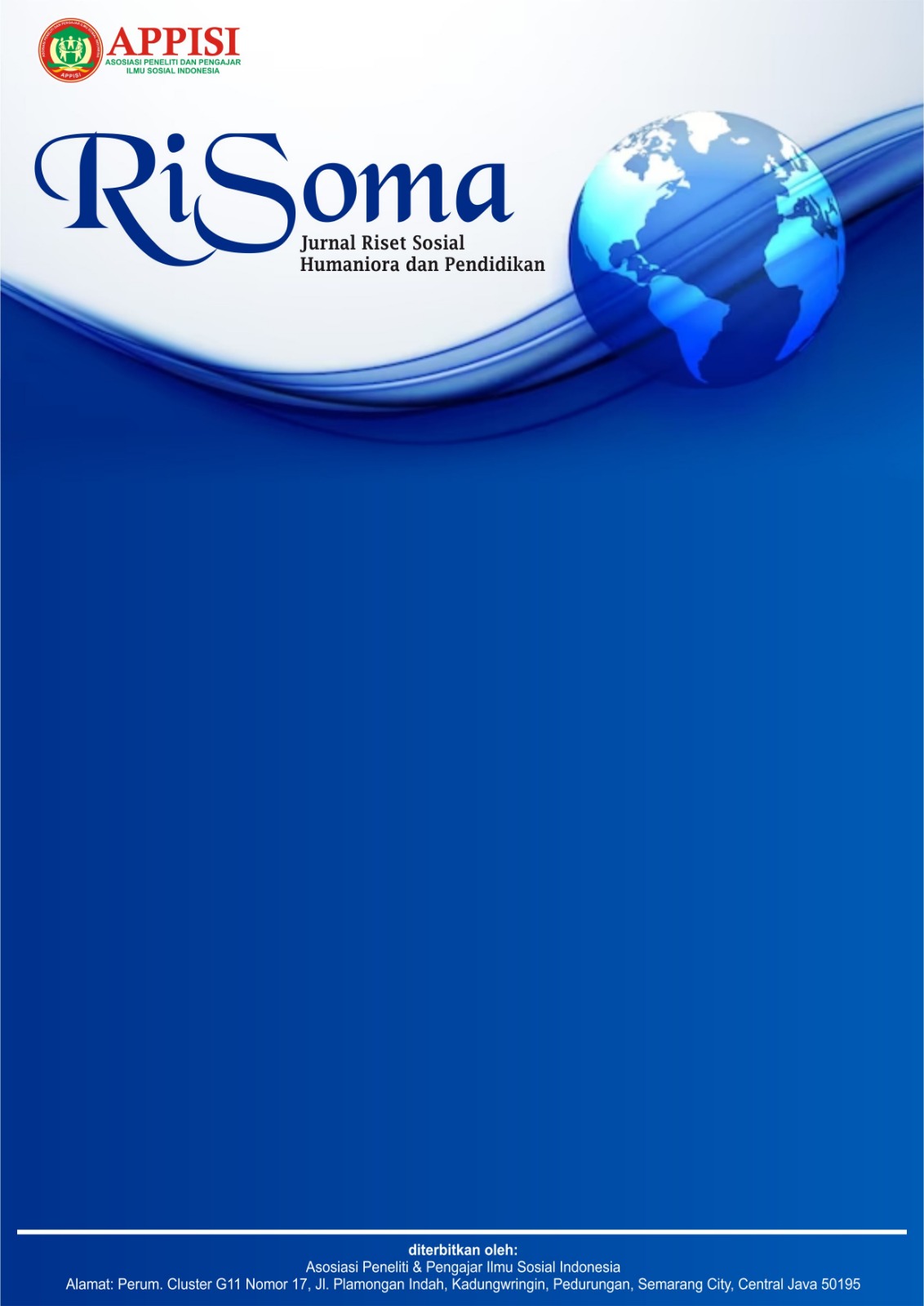Analisis Penerapan Statistical Quality Control (SQC) dalam Mengurangi Produk Cacat pada Bingkai Pigura di Bmrsign Wallgallery Lamongan
DOI:
https://doi.org/10.62383/risoma.v2i5.363Keywords:
Statistical Quality Control (SQC), Quality Control, Defective ProductsAbstract
The problem faced by the Bmrsign Wallgallery company is that products are found that do not match the specifications set by the company. The types of product damage are wrong size frames, broken frames, and uneven corners. To solve this problem, the SQC method is used to reduce the causes of defects in the product. The purpose of this method is to reduce the risk of damage to the product. The object studied was Bmrsign Wallgallery with a sample of 29 days. The use of the SQC method is accompanied by analysis tools in the form of control charts (p-charts), Pareto diagrams, cause and effect diagrams (fishbone). Based on the results of data analysis implementing the Statistical Quality Control (SQC) method using the P-Chart control map, the largest value of the Upper Control Limit (UCL) can be shown as 0.272, while the Lower Control Limit (LCL) is -0.013. The results show that the number of defective products during the frame making process is still within normal control limits. The analysis using the Pareto diagram shows that the types of frame defects are dominated by broken with a percentage of 35% or a total of 66 pcs, inappropriate size shapes as much as 33% or a total of 62 pcs, and uneven corners as much as 32% or a total of 60 pcs. Based on the results of the fishbone diagram analysis, defective products are caused by workers who are not focused, work standards are not adhered to, machine maintenance is not given attention, and there is a decrease in the quality of raw materials.
Downloads
References
Amin, N. F., Garancang, S., & Abunawas, K. (2023). Konsep umum populasi dan sampel dalam penelitian. Jurnal Pilar: Jurnal Kajian Islam Kontemporer, 14(1), 1–17.
Arianti, M. S., Rahmawati, E., & Prihatiningrum, Y. (2020). Analisis pengendalian kualitas produk dengan menggunakan statistical quality control (SQC) pada usaha amplang Karya Bahari di Samarinda. Edisi Juli-Desember, 9(2), 2541–1403.
Febriani, D., & Aini, A. Q. (2024). Analisis kepemilikan saham terkoncentrasi, komite penunjang dewan komisaris, corporate governance, dan corporate social responsibility terhadap praktik agresivitas pajak dalam perusahaan. Jurnal Ekonomi, Manajemen Dan Akuntansi, 3(1), 184–195.
Firmansyah, D., & Dede. (2022). Teknik pengambilan sampel umum dalam metodologi penelitian: Literature review. Jurnal Ilmiah Pendidikan Holistik (JIPH), 1(2), 85–114. https://doi.org/10.55927/jiph.v1i2.937
Kristanto, H., Tamsi, & Cuandra, F. (2022). Penerapan manajemen operasional dalam meningkatkan kinerja di Apple, Inc. YUME: Journal of Management, 5(3), 84–96. https://doi.org/10.37531/yume.vxix.457
Marlinda, C., Utami, R., Michelle, & Sarazwati, R. Y. (2024). Perlakuan akuntansi produk rusak dan produk cacat pada Chitchathomemade. Journal of Innovation Research and Knowledge, 3(8), 1555–1562.
Meldayanoor, A., R. R., & Ramadhani, M. (2018). Analisis statistical quality control (SQC) sebagai pengendalian dan perbaikan kualitas produk tortilla di UD. Noor Dina Group. Jurnal Teknologi Agro-Industri, 5(2), 132–140. https://doi.org/10.34128/jtai.v5i2.79
Montgomery, D. C. (2001). Introduction to statistical quality control (7th ed.). S. Hong (Ed.). Arizona State University.
Nurhazana, S., Sartika, N., & Muttaqin, H. (2022). Analisis perlakuan produk rusak dan produk cacat dalam penentuan harga jual produk (studi kasus pada Bumdesa Langgam Sako Desa Teluk Latak). In Seminar Nasional Industri Dan Teknologi (SNIT), November, 134–143.
Puspita, K., Riany, D. A., & Sutarjo. (2023). Pengendalian kualitas produksi benang partially oriented yarn dengan menggunakan metode seven tools (studi kasus Departemen POY CP-3 PT. Indorama Synthetics Purwakarta Tbk). Jurnal Teknologika, 13(2), 207–218. https://doi.org/10.51132/teknologika.v13i2.294
Suriani, N., Risnita, & Jailani, M. S. (2023). Konsep populasi dan sampling serta pemilihan partisipan ditinjau dari penelitian ilmiah pendidikan. Jurnal IHSAN: Jurnal Pendidikan Islam, 1(2), 24–36. https://doi.org/10.61104/ihsan.v1i2.55
Suryatman, T. H., Kosim, M. E., & Julaeha, S. (2020). Pengendalian kualitas produksi Roma Sandwich menggunakan metode statistik quality control (SQC) dalam upaya menurunkan reject di bagian packing. Journal Industrial Manufacturing, 5(1), 1–12. https://doi.org/10.31000/jim.v5i1.2429
Wibowo, E., & Utomo, H. (2016). Pengaruh keselamatan kerja dan kesehatan kerja terhadap kinerja dengan kepuasan kerja sebagai variabel intervening (studi kasus pada karyawan bagian produksi unit serbuk effervescent PT Sido Muncul Semarang). Among Makarti, 9(1), 38–59. https://doi.org/10.52353/ama.v9i1.126
Wirawati, S. M. (2019). Analisis pengendalian kualitas kemasan botol plastik dengan metode statistical process control (SPC) di PT. Sinar Sosro KPB Pandeglang. Jurnal InTent, 2(1), 94–102.
Downloads
Published
How to Cite
Issue
Section
License
Copyright (c) 2024 RISOMA : Jurnal Riset Sosial Humaniora dan Pendidikan

This work is licensed under a Creative Commons Attribution-ShareAlike 4.0 International License.





